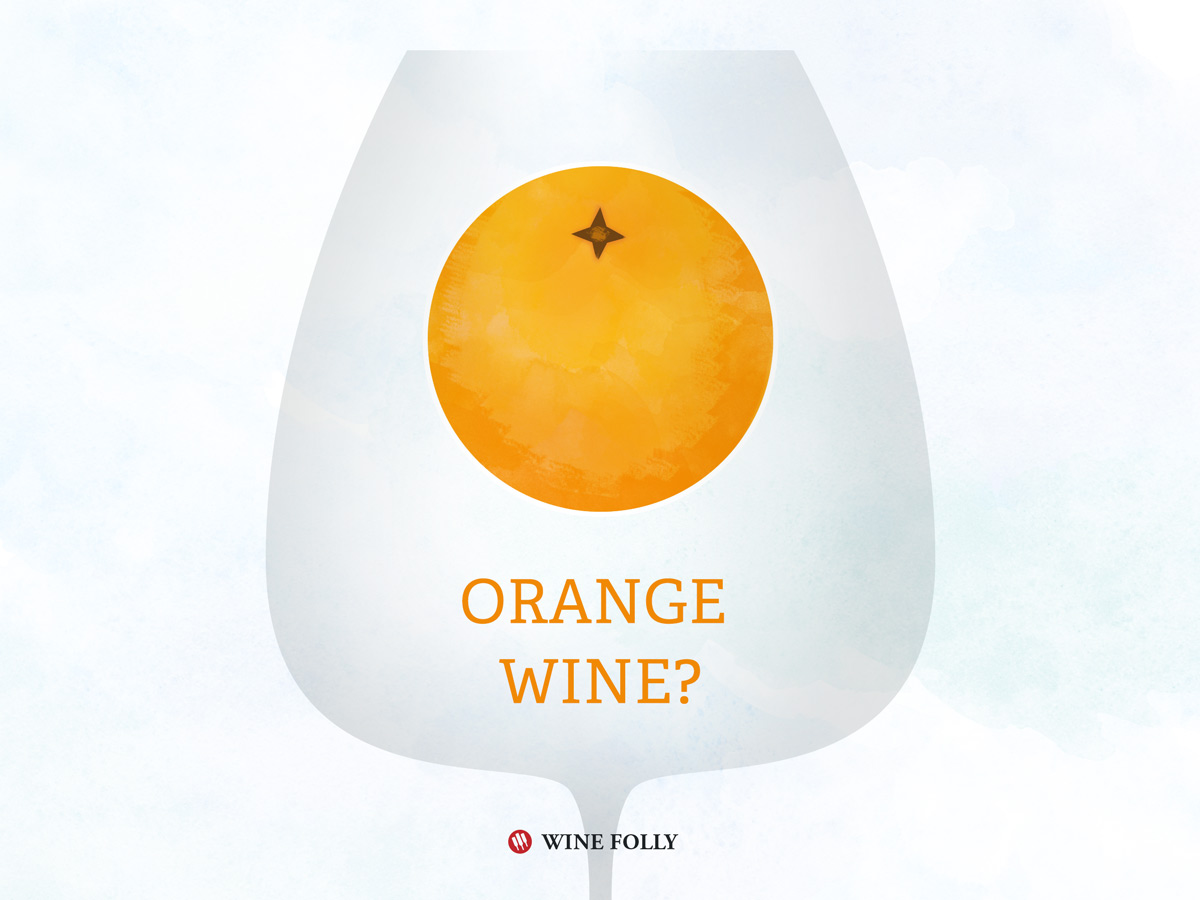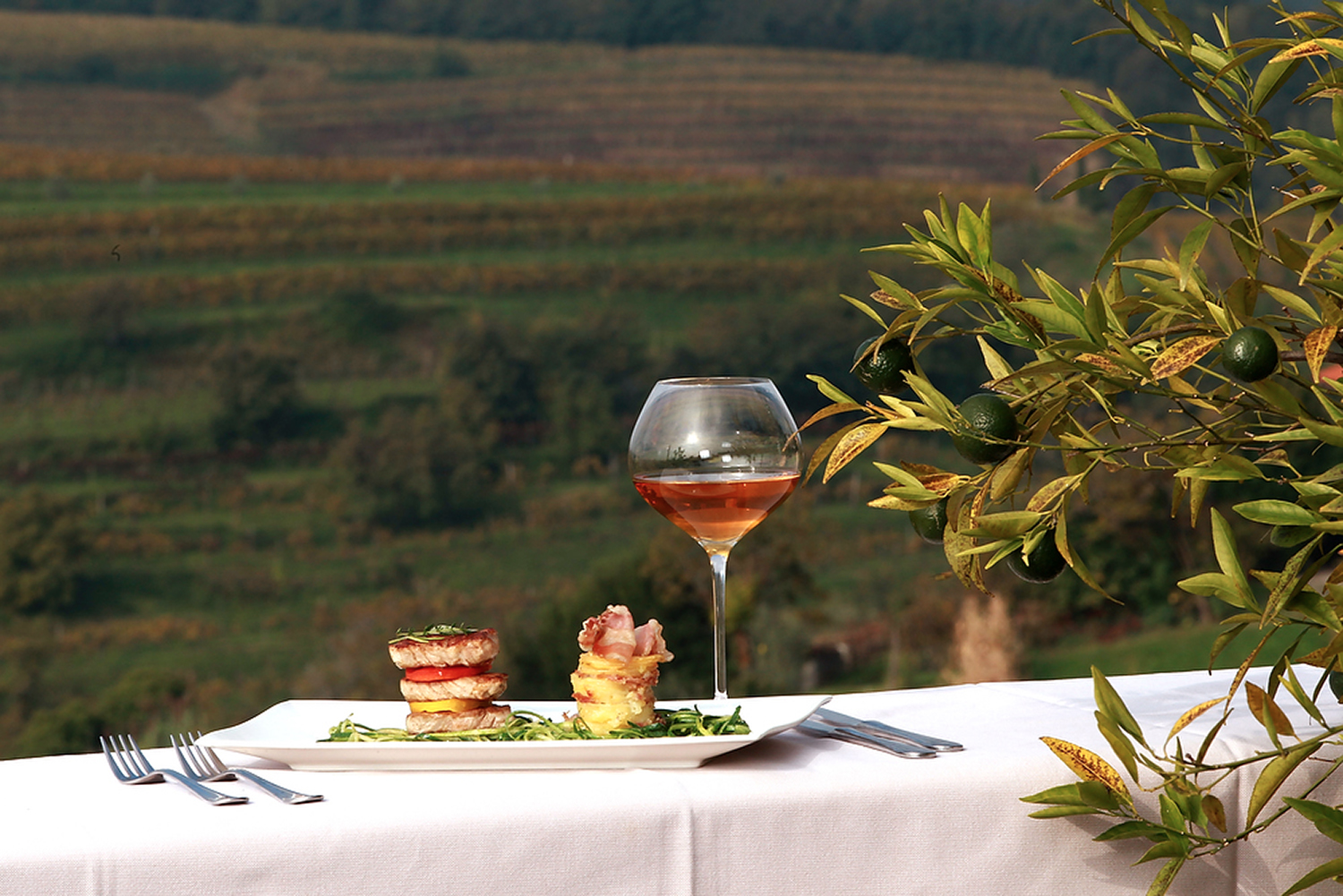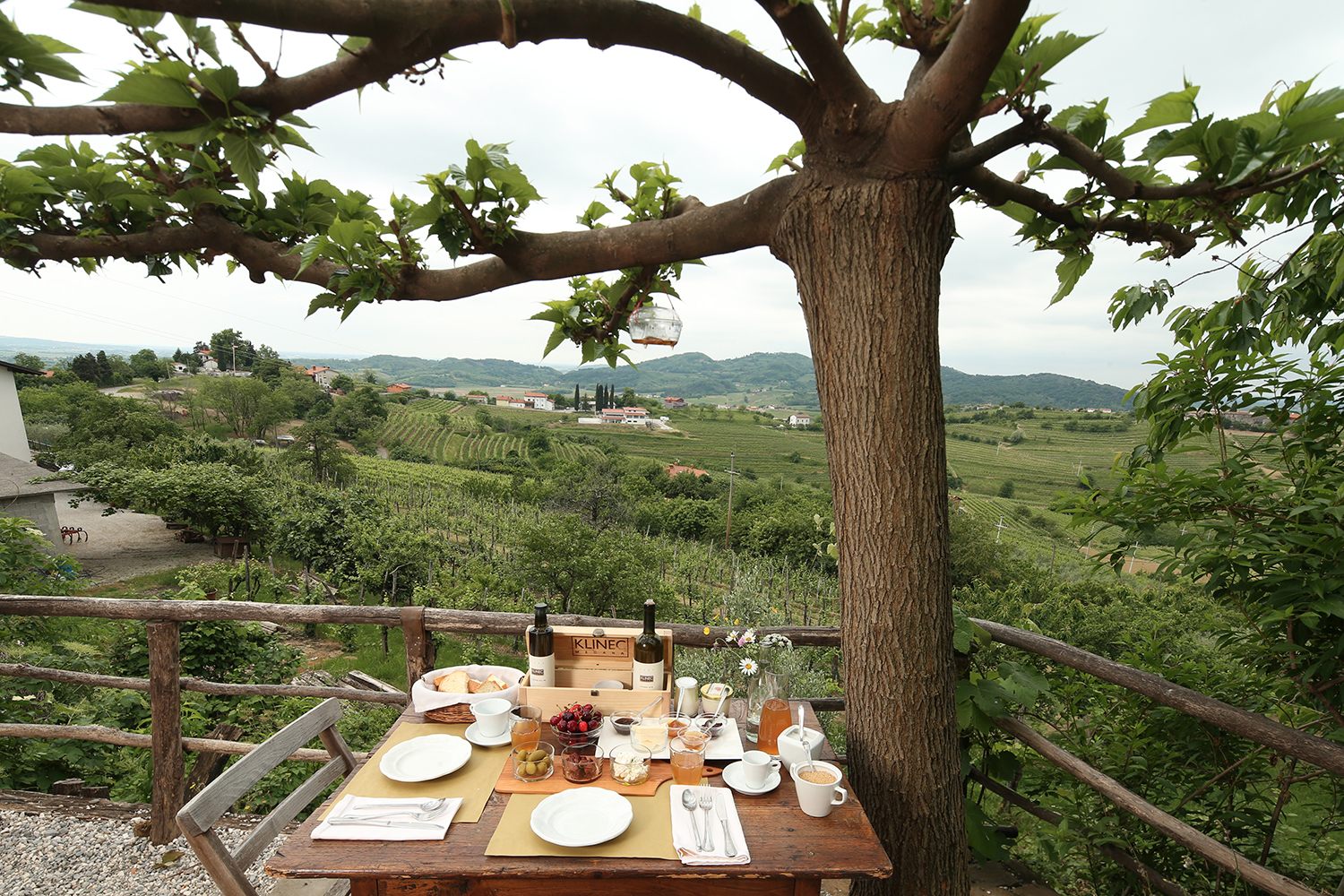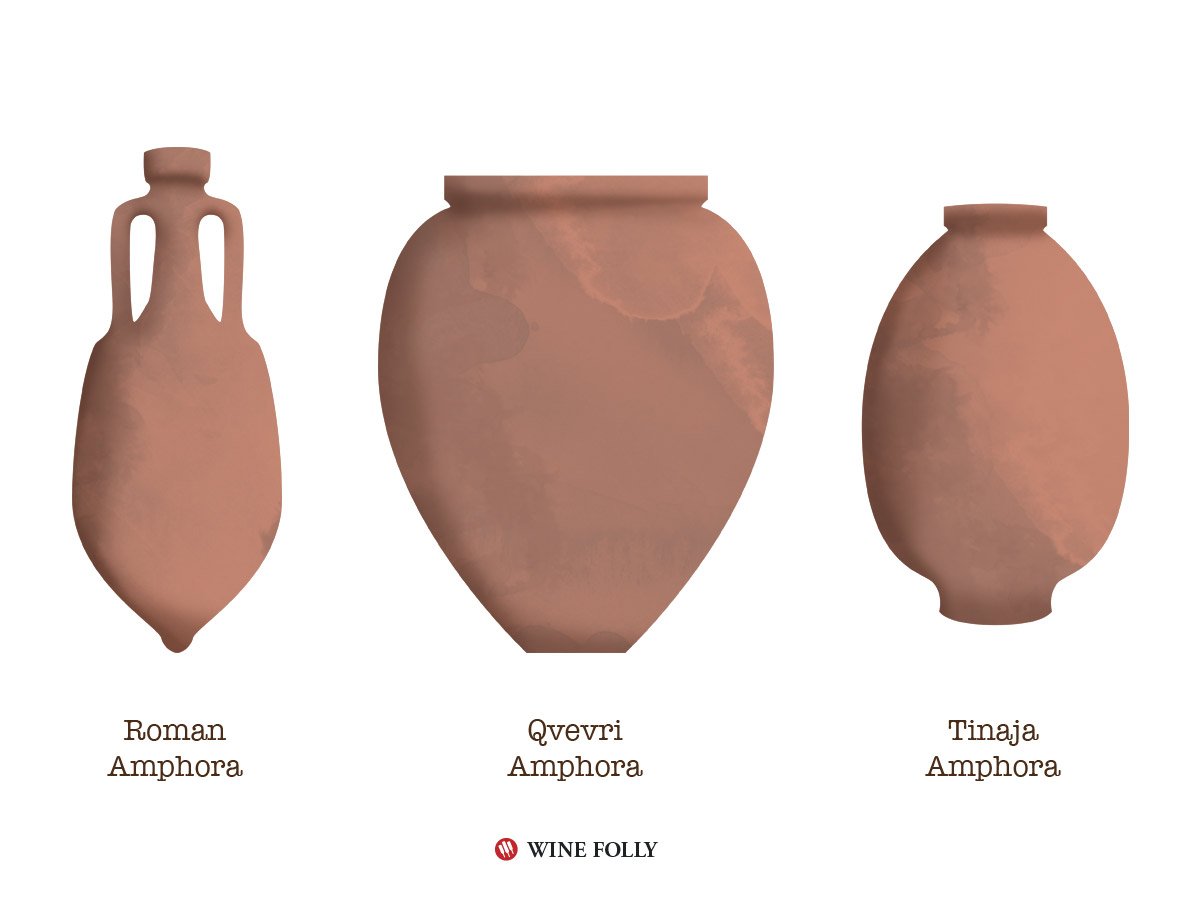Orange wine isn’t just a trend, it’s a glimpse into what wine may have been like thousands of years ago.
What is an Orange Wine?
Orange wine is a type of white wine made by extending contact with grape skins (and seeds) during winemaking. Orange wines often taste more like dry red wines because they have tannin.

Orange Wine Tastes Like Nothing You’ve Had Before
Most orange wines aren’t sweet and have bold, honeyed aromas like jackfruit (a fleshy tropical fruit), hazelnut, brazil nut, bruised apple, wood varnish, linseed oil, juniper, sourdough, and dried orange rind.
On the palate, they’re bold, dry, and have tannin (like unsweetened iced tea) with a sourness similar to fruit beer. Because of their natural acidity and tannin, orange wines pair with a wide diversity of foods.

The Perfect Pairing with Spicy Asian and Indian Cuisine
Because of their boldness, orange wines pair well with equally bold foods. In fact, some of the best matches with orange wines include foods that are hard to pair with wine.
For example, the tannin in orange wine helps cut through the bold and spicy flavors found in curry dishes and Indian cuisine.
The sourness in orange wine matches well against fermented flavors like kimchi in Korean dishes and nattō in Japanese food.
Unlike red or white wines, orange wines hold up to both beef or fish.
Orange wine is also called “amber wine” or “ramato,” which means auburn, in Italian and describes skin-contact Pinot Grigio wines from Friuli-Venezia Giulia.

Orange Wines Are Like Drinking Wine History
Orange winemaking hails from ancient traditions. We can find these techniques used as far back as 5,000 years ago in what is now Georgia (the country, not the state).
Since we now know that Georgia and the greater Caucasus region is the original birthplace of wine and winemaking, orange wines offer a unique window into ancient wine.

Unique Flavors Come From How Orange Wine is Made
Originally, orange wines fermented in large buried earthenware amphorae called Qvevri (“Kev-ree”) which were closed with flagstones and sealed with beeswax. There were no additives, not even yeast.
During fermentation, the wine is exposed to lots of oxygen which morphs fresh fruit and flower aromas into aromas like bruised apple and honey. Over time, wines taste nutty.
After an aging period, wines emerge from the amphora with a clear, rich amber color. The color comes from lignin in the grape seeds and astringent tannin comes from skin contact during fermentation.

Preferred Grapes
While you can find orange wine made from any white wine grape from Chardonnay to Pinot Grigio, some white grapes have traditional importance.
- Ribolla Gialla: (ree-bol-luh jah-lah) This white grape grows in Northeastern Italy and Slovenia. Ribolla Gialla wines taste dry with bold, stewed fruit and honey aromas.
- Rkatsiteli: (kat-seh-tel-lee) Found in Georgia and producing more citrus and resinous flavors in wines. Rkatsiteli wines often have a red-amber color.
- Pinot Grigio: Another Italian choice that’s often labeled “ramato”, meaning “auburn”, with a honeyed palate and a rich, red-orange color.
Orange Wines Around The World
Almost 30 years ago, we started to see more orange wines from Northeastern Italy, the country of Georgia, and Slovenia in the market. It created a splash worldwide and now they’re everywhere! Here are some classic regions and producers to get you started.
Italy
Most orange winemaking can be found in northeastern Italy, along the border of Slovenia in Friuli-Venezia Giulia. Here you can find orange wines produced with the indigenous grapes of the region, including Sauvignon Vert (Friulano), Ribolla Gialla, and Pinot Grigio.
The orange wine process was popularized in Italy by winemaker Josko Gravner who first attempted an orange wine in 1997.
Example Italian Orange Wine Producers:
- Bressan “Carat” (Friuli-Venezia Giulia)
- Antonio Caggiano “Béchar” (Campania)
- Donati Camillo “Malvasia dell’Emilia” (Emilia Romagna)
- Frank Cornelissen “Munjebel” (Sicily)
- Cos (Sicily)
- Gravner (Friuli-Venezia Giulia)
- Edi Kante (Friuli-Venezia Giulia)
- Angiolino Maule “Sassaia” (Gambellara, Veneto)
- Radikon (Friuli-Venezia Giulia)
- Rinaldini (Emilia Romagna)
- Franco Terpin (Friuli-Venezia Giulia)
- I Vigneri by Salvo Foti (Sicily)
Slovenia
Just over the border from Friuli-Venezia Giulia in Italy is the region of Goriška Brda (“Gore-eesh-kah Barda”) in Slovenia.
Orange wine is a daily pleasure in Slovenia and you’ll often see wines poured in standard glasses, like beer.
Another wine oddity lives here too, called Motnik. Motnik is made in barrels disinfected by smoking herbs like rosemary, bay leaves, and sage.
Example of Slovenian Orange Wine Producers:

Georgia
Georgia is most famous for its qvevri-aged wines. Qvevri (aka Kvevri) were the first vessels ever to be used for wine fermentation, with archaeological findings dating back to 6000 BC.
The clay vessels are lined with beeswax and completely buried under the ground where the temperature stays consistent throughout the year. It creates a very slow fermentation which further develops oxidative flavors.
The grape of choice in Georgia for orange wine is called Rkatsiteli (“kat-seh-telly”), which is known to produce wine with a deep red-orange hue.
Example Georgian Orange Wine Producers:
- Pheasant’s Tears
- Alaverdi Monastery “Gurjaani” in Kakheti
- Our Wine in Kakheti
- Tbilvino “Quevris”
- Lagvinari “Goruli Mtsvane,” “Tsolikouri” and “Tsitska”
United States
Some of the more experimental producers are starting to make natural wines and are experimenting with the orange wine technique, particularly in New York, where the Rkatsiteli (“kat-seh-tel-lee”) grape variety is grown.
Example United States Orange Wine Producers:
- Channing Daughters “Meditazione,” “Ribolla Gialla” and “Ramato” (New York)
- Pax Mahle
- Red Hook Winery “SK” series (New York)
- Salinia
- Scholium Project by Abe Schoener (Suisun Valley, California)
- Shinn Estate Vineyards “Veil” by Anthony Nappa (New York)
- Wind Gap Wines “Pinot Gris”
Australia
The more progressive Aussie winemakers have started to make orange wines primarily with Sauvignon Blanc, which works wonders in this style.
Example Australian Orange Wine Producers:
- BK Wines “Skin and Bones White” (Adelaide Hills)
- Born & Raised Wines Sauvignon Blanc (Victoria)
- Lucy Margaux Vineyards (Adelaide Hills)
- Patrick Sullivan
France
In France, there is a region east of Burgundy that produces rich orange-hued wines.
The Jura region (famous for Comté cheese) makes nutty-tart wines called Vin Jaune, meaning “yellow wine”, and Côtes du Jura.
Both of these wines employ an oxidative style of winemaking with a rare grape called Savagnin. While these wines use a slightly different winemaking method (they press off the skins), the wines have a similar taste to orange wines.
Example French Orange Wines:
- Vin Jaune (Jura)
- Côtes du Jura (Jura)
- Chateau-Chalon (Jura)
- Gérard Bertrand “Orange Gold” Southern France
- Jean-Yves Peron (Savoie)
- La Sorga (Languedoc Roussillon)
- Domaine Gauby “La Roque White” (Côtes Catalanes)

South Africa
The progressive winemakers in South Africa can be found mostly in the Swartland region in the Western Cape, where the vineyards are quite old and have less popular grapes.
Example South African Orange Wine Producers:
- Intellego “Elementis”
- Lammershoek “Cellar Foot” Series
- Sadie Family Wines “Palladius”
- Testalonga “El Bandito”
Austria
Just north of the border from orange wine central in Italy (in Friuli-Venezia Giulia in Italy), Austria experimenting with orange wines with a number of different grape varieties.